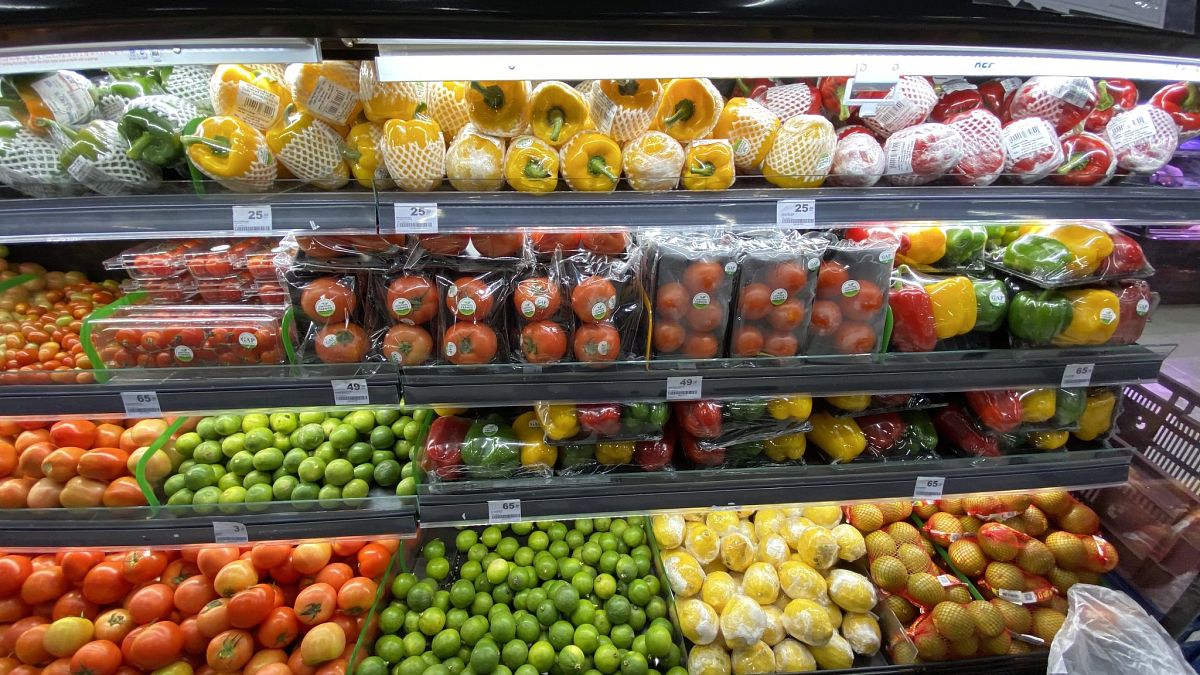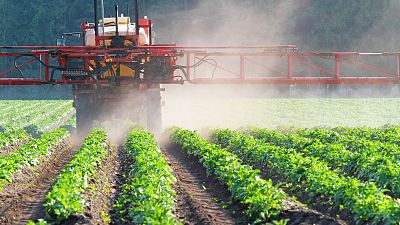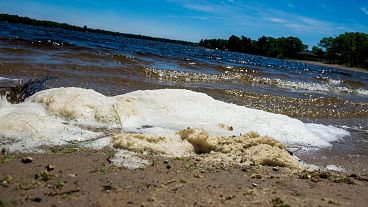Analysis conducted by Pesticide Action Network Europe revives debate on PFAS ban covering active substances in pesticides.
Residues of toxic “forever chemicals” substances traceable on fruit and vegetables has reportedly tripled in the EU over the last 10 years, according to an NGO report published today (27 February).
The Pesticide Action Network (PAN) Europe report purported to track residues of 31 Per- and polyfluoroalkyl substances (PFAS) — known as “forever chemicals” because they are impossible to eradicate — in fruit and vegetables in the EU between 2011 and 2021.
The study, based on official data from the national monitoring programmes of pesticide residues in food, focused on Austria, Belgium, France, Germany, Greece, Hungary, the Netherlands and Spain, with references to other EU countries in the analysis.
According to the assessment, over the past decade the number of non-biologic fruits and vegetables showing PFAS residues — as determined by their detectability, rather than whether legal levels had been exceeded — rose by 220% for fruit and by 274% for vegetables, with the most distinct average increase being registered for apricots (+333%), peaches (+362%) and strawberries (+534%).
Summer fruit produced in the EU revealed higher levels of PFAS, the study claimed, highlighting strawberries (37% vs 12%), peaches (35% vs 11%) and apricots (31% vs 21%). As for vegetables, while European-grown were on average less heavily contaminated than fruit (20%), the analysis claimed, chicories (42%), cucumbers (30%), peppers (27%) were particularly polluted.
“Our study reveals a deliberate, chronic and widespread exposure of European consumers to cocktails of PFAS pesticides in fruit and vegetables,” said Salomé Roynel, policy officer at PAN Europe, who called on a ban on PFAS active substances in pesticides as well as on the manufacture and export of these chemicals.
On February 2023, the European Chemicals Agency (ECHA) published a proposal to restrict around 10,000 PFAS. Peter Pierrou, director of communications at the Sweden-based International Chemical Secretariat regretted the proposed ban “overlooks pesticides”.
PAN Europe’s Roynel claimed “their [PFAS] toxicity to human health is already well documented, including risks to unborn children, brain damage, disruption of the endocrine system and cancer. Moreover, the impact of pesticide mixtures is simply not investigated”.
The report states that, in the case of PFAS, any level of exposure is considered as "problematic", as PAN Europe considers even legally acceptable traces of these chemicals to be harmful.
The Netherlands (27%) and Belgium (27%), followed by Austria (25%), Spain (22%) and Portugal (21%) were responsible for producing products with most levels of PFAS, according to the report. Among imported fruit and vegetables, the most likely to contain PFAS pesticide residues are those from Costa Rica (41%), India (38%), South Africa (28%), Colombia (26%) and Morocco (24%).
Kevin Heylen, senior regulatory affairs manager at CropLife Europe, a Brussels-based pesticide and plant biotechnology lobby, said all substances, whether on the market or in the pipeline, are “tested extensively” in line with the existing legislation on plant protection products.
“[This is done] to make sure that they do not have a negative impact on humans, the environment, biodiversity or waterbodies when used as recommended,” Heylen told Euronews.
Dany Bylemans, general-director of pcfruit, a Belgium-based center of fruit research, said he was “not aware” of the presence of PFAS in fruit.
“Our Belgian Food Agency took a number of samples in the region of the 3M production plant of PFAS [near Antwerp] at the moment the pollution by this company became clear. Residues were found in eggs of free-range chickens, but no PFAS residues were found on fruits nor vegetables, whereas in that region PFAS can be found in soil samples,” Bylemans told Euronews.
Back in 2020, EFSA set a new safety threshold of 4.4 nanograms per kilogram of body weight per week for the main PFAS that accumulate in the body. Reacting to PAN Europe’s study, the EU food agency told Euronews it is “currently collecting available data on the occurrence of PFAS” following a “general call for occurrence data of chemical contaminants in food and feed”.
The commission and ECHA didn’t respond to a request for comment at the time of publishing.



